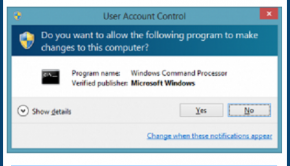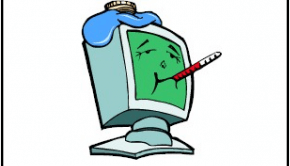Malware Troubleshooting
Reader Question:
“Hi Wally, I am having problems with Malware and wondering how to fix it?” - Daniel W., United Kingdom
Before addressing any computer issue, I always recommend scanning and repairing any underlying problems affecting your PC health and performance:
- Step 1 : Download PC Repair & Optimizer Tool (WinThruster for Win 10, 8, 7, Vista, XP and 2000 – Microsoft Gold Certified).
- Step 2 : Click “Start Scan” to find Windows registry issues that could be causing PC problems.
- Step 3 : Click “Repair All” to fix all issues.
Setting up weekly (or daily) automatic scans will help prevent system problems and keep your PC running fast and trouble-free.
Wally’s Answer:
Overview of Malware
Malware is a term that might not be familiar to you. Most of us know about viruses and spyware but may not know that they are all classified under the category of “malware”. In fact, malware is a general term that is used to refer to computer viruses, Trojan horses, worms, spyware, adware, spam, as well as other malicious programs whose intention is usually to harm your computer.
Malware is a software program that is intentionally created to cause disruptions to computer operations. Malware programs are usually malicious, and their primary function is to try to make unauthorized changes and access to other computer programs. The overall goal of Malware is usually to exploit computer resources and make the computer system vulnerable to threats, or to steal customer’s private information and data (eg. credit card numbers, banking information, etc.).
Thus, you need to be very careful when installing programs, especially those downloaded over the Internet. Many malware programs disguise themselves as genuine programs, usually as fake antivirus and antispyware utilities. In addition to being a vigilant PC user, it’s a good practice to protect your PC by installing a powerful anti-malware protection program. These programs not only detect malware but also can often warn you of potential threats before they negatively affect your PC.
What Problems are Associated with Malware?
Malware errors vary in nature. Most errors usually manifest themselves when a fake security program “detects” malware programs (falsely) on the system, and attempts to nag the user of these “existing threats”. Such fake error notifications then prompt the user to purchase the “software” to get rid of the fake malware infection.
Missing system files in Windows can cause true malware-related errors. In these cases, programs that are otherwise genuine and legitimate may turn out to be a system threat due to missing system files. This results in the antimalware program marking these programs as “corrupt”.
These types of errors usually manifest themselves through various error codes. Once an error code is shown, a computer user needs to record it down so that the error code can be interpreted in order to find a solution to the problem. In most cases, such malware errors can be fixed through a System Restore, or in the worst-case scenario, a re-installation of Windows.
I Hope You Liked This Blog Article! If You Need Additional Support on This Issue Then Please Don’t Hesitate To Contact Me On Facebook.
Is Your PC Healthy?
I always recommend to my readers to regularly use a trusted registry cleaner and optimizer such as WinThruster or CCleaner. Many problems that you encounter can be attributed to a corrupt and bloated registry.
Happy Computing! ![]()

Wally's Answer Rating
Summary: Every Windows Wally blog post is evaluated on these three criteria. The average of all three elements determines an "Overall Rating" for each blog post.














